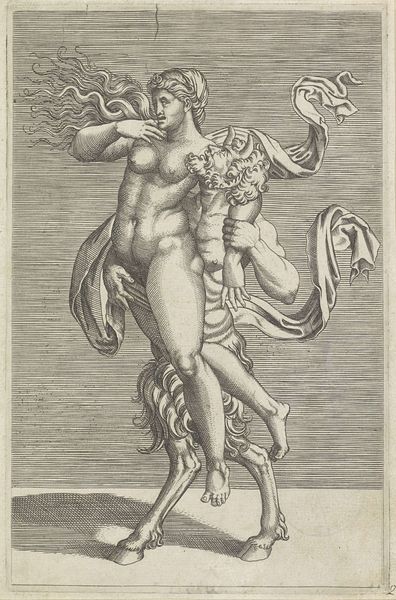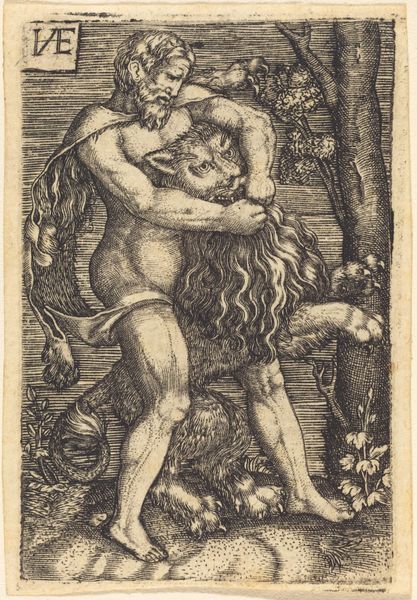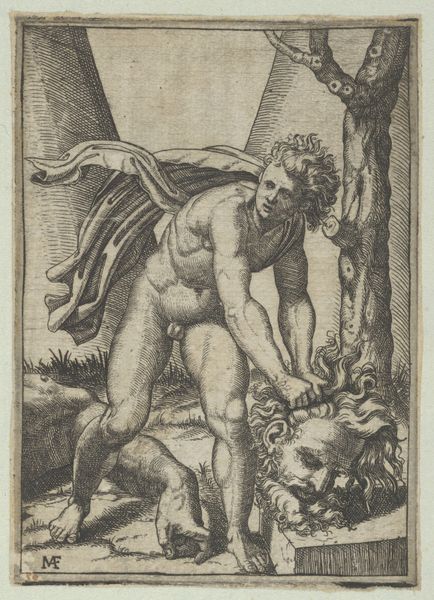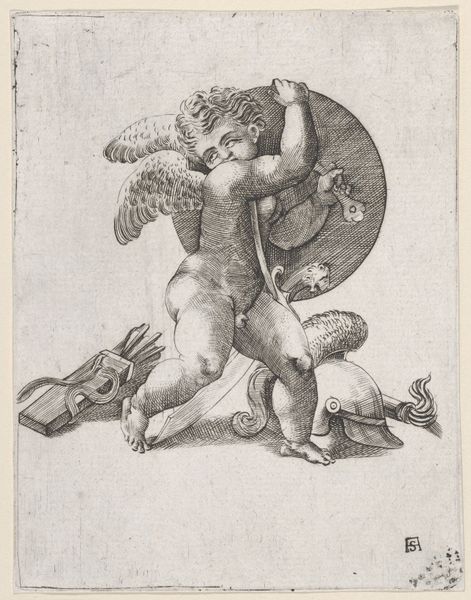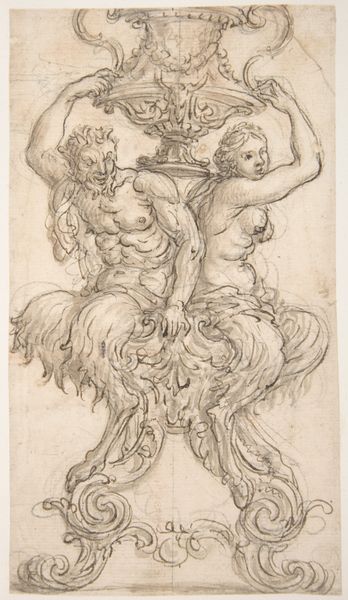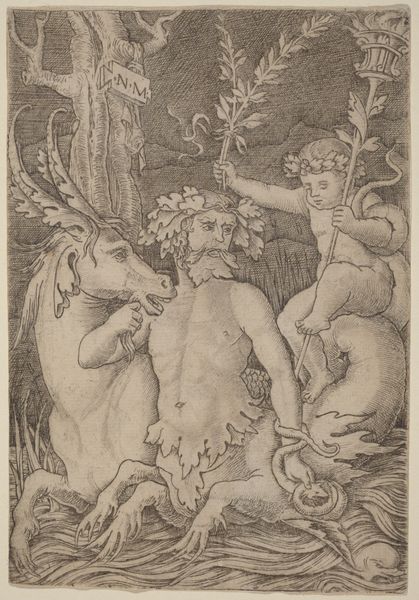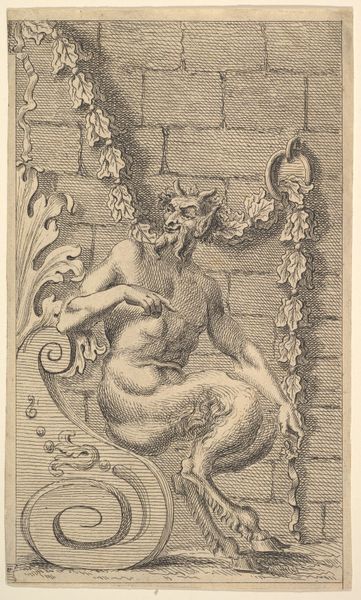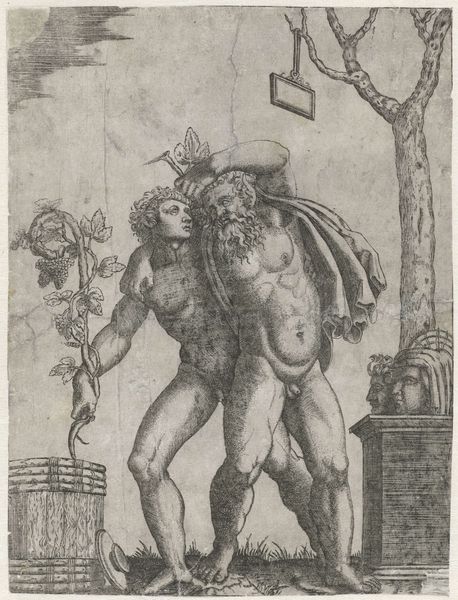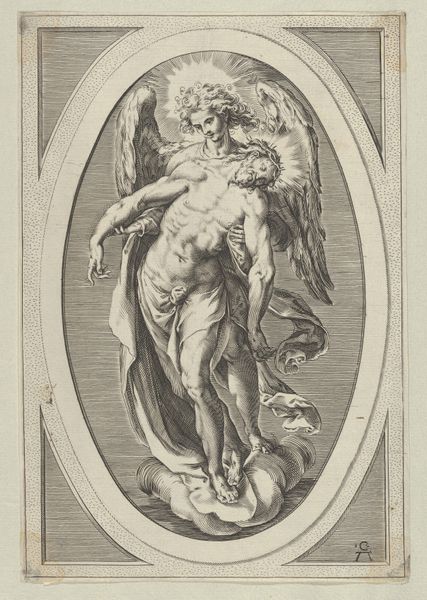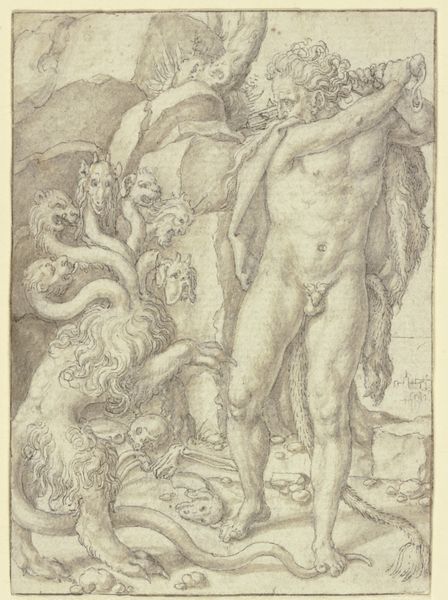
Satyr carrying a nymph restraining her right arm 1510 - 1532
0:00
0:00
drawing, print, engraving
#
drawing
#
allegory
# print
#
figuration
#
11_renaissance
#
history-painting
#
italian-renaissance
#
nude
#
engraving
Dimensions: Sheet (Trimmed): 6 3/4 × 4 7/16 in. (17.1 × 11.2 cm)
Copyright: Public Domain
Curator: Marco Dente created this engraving, titled "Satyr carrying a nymph restraining her right arm," sometime between 1510 and 1532. The piece resides here at the Metropolitan Museum of Art. Editor: Woah, the first thing that jumps out is how not-chill this looks. The nymph looks seriously stressed, trying to squirm away from this...satyr? Curator: Right, and we must understand that representations like these are firmly rooted within patriarchal power structures. The act of abduction, common in classical mythology, often serves to justify male dominance and female subjugation. This work presents such a narrative for contemplation. Editor: Contemplation is one word for it! It also feels a bit…voyeuristic? Like we're peering in on something we shouldn't be. Is that the Renaissance trying to titillate or tell some grand moral story, do you think? Curator: Perhaps it's both? Renaissance art was rife with complex allegories, and representations of mythological figures frequently addressed societal morals and desires, however, often from a male-centered perspective, it is relevant to note. The nymph’s struggle embodies resistance. Dente doesn't explicitly condone the satyr’s actions, but leaves the audience to interpret the tension. Editor: So, less a celebration of kidnapping, more a snapshot of a cultural power dynamic? Although that doesn’t exactly make it easier to look at today. The woman looks seriously unhappy. The satyr seems a bit oblivious in a clumsy and weird way. Curator: Precisely. The Italian Renaissance interpretation and depiction of such figures tells as much about the values and expectations of the male gaze during that period, which inevitably informs a perspective that objectifies and eroticizes the female form. Editor: I see what you mean. Still, I wish she was winning! Thanks for that little peek behind the curtain. I'll definitely look at other engravings of the Renaissance in a slightly more informed, albeit wary, way. Curator: Understanding the context lets us question these historical power dynamics within the artwork and even apply the interrogation to our current values, as well.
Comments
No comments
Be the first to comment and join the conversation on the ultimate creative platform.

